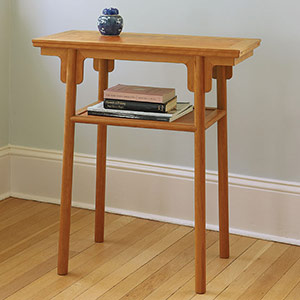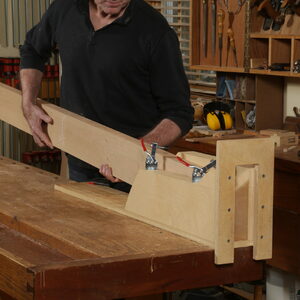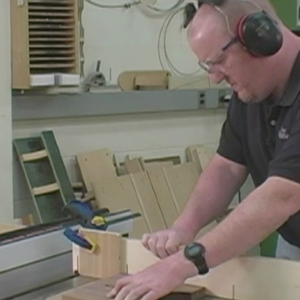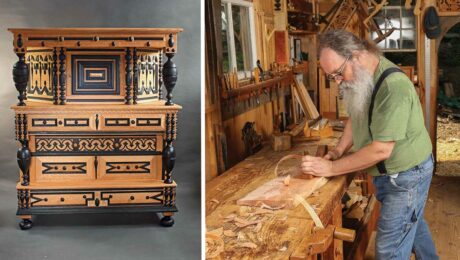Strategies For Building Stronger Furniture
Strategies drawn from structural engineering solidify your furniture
Synopsis: Building a long chest of drawers with legs at each end but no supports in between doesn’t require an engineering degree, but it does require an understanding of the forces that act upon a piece of furniture. When commissioned to build a chest of drawers slightly over 6 ft. in length, Mike Korsak had to figure out how to design such a long case so that the drawers, when loaded, do not sag. His solution was to stiffen the structure with diagonal braces, L-section aprons, and a rigid back that turns solid back panels into beams while still permitting them to move with the seasons.
I am not an engineer, but I developed a good sense of loads and structure when I spent several years as a designer of timber-frame structures. Buildings framed with huge timbers may seem like distant cousins to furniture, but they aren’t far removed. Understanding the forces acting on a piece of furniture is much like understanding the forces acting on a building.
When I received a commission to build a chest of drawers slightly over 6 ft. in length, my first thought—after roughing out a design with 10 drawers and no supports between the legs at each end—was how to deal with the loads created by all those heavy drawers. My primary concern was deflection, or sagging, which could change the shape of the drawer openings, leading to drawers that don’t fit their pockets. Not acceptable! I’ll outline here the approaches I used to construct a case that could withstand that load across a long, unsupported span. You can adapt the ideas to casework of any size or style.
I stiffened the structure in a variety of ways: adding diagonal braces, L-section aprons, and a rigid back that turns solid back panels into beams while still permitting them to move with the seasons. The diagonal braces were the biggest game-changer—they greatly stiffened the case but also altered the load path, leading me to strengthen the back to compensate.
The front and rear aprons are main load-carrying members, so I designed them to be very stiff. The curving bottom edge of the apron, flowing and asymmetrical, might add a whimsical note to the chest, but engineering influenced its design. I located the tallest part of the apron at mid-span, where the potential for deflection would be greatest; and I let the apron narrow down where it meets the legs. This might seem counterintuitive, but the internal stresses that cause deflection in a beam are generally highest at the center of a span.
For the full article, download the PDF below.
More on FineWoodworking.com:
- Bold joinery for casework – Make your cabinets stand out with clean, attractive through-tenons
- Hudson Valley Chest of Drawers – Tasteful moldings and turned feet add quiet style to a sturdy dovetailed case
- Engineer Shelves With The Sagulator – Online calculator determines thickness and length to prevent shelves from sagging






















Comments
What wood was used for the piece ?
Also, might have been more effective to add a strip of 1/8" metal to the bottom edge of the stretcher with countersunk screws. Similar to building a masonry lintel. Angle iron would have been the fall back if you really needed to carry a load and just have the bottom stretcher as decoration.
Loved this article! I have made cabinets with wide unsupported spans before, and have always grappled with designing for strength. Thanks!
I also wondered what wood you used. I am assuming that the finish involved stain? It looks great.
To both commenters above: Thanks very much for your comments. The primary wood used was black walnut, the top row of drawers was crotch walnut. The finish did not include stain, that's just the natural color and brilliance of walnut under a clear finish.
Are there any accepted design requirements out there for furniture? Such as how much deflection under x load? (yes I'm a recovering engineer...). We tend to overbuild furniture, just because or just in case. It's impossible to build for zero deflection, no doubt an inch is too much, but how much is just right? If you are creating this on commission, do you specify this requirement like you would the finish or design.
Great article, made me think much more closely about how I design!
I am really enjoying the unlimited subscription to Fine Woodworking. Nice to be able get all the information in one place.
Hardeep Hundal
this is very interesting as a beginner. How did you join the drawer runners to the front and rear? i dont think thats covered in the article? love your work.
Log in or create an account to post a comment.
Sign up Log in